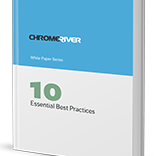 Over the past 14 years, I’ve had the good fortune to be part of many business-process-improvement initiatives related to Spend Management. It’s been my experience that often, at first, the Accounts Payable managers are concerned about the impact on their department and can even be reluctant to pursue Accounts Payable automation altogether. I’m not sure if it’s the specter of the way robotics once replaced countless skilled workers in Detroit or the common notion that one day we will all be replaced by machines. It just seems like AP managers are often concerned about losing headcount and control over processes that they have owned for many years.
Over the past 14 years, I’ve had the good fortune to be part of many business-process-improvement initiatives related to Spend Management. It’s been my experience that often, at first, the Accounts Payable managers are concerned about the impact on their department and can even be reluctant to pursue Accounts Payable automation altogether. I’m not sure if it’s the specter of the way robotics once replaced countless skilled workers in Detroit or the common notion that one day we will all be replaced by machines. It just seems like AP managers are often concerned about losing headcount and control over processes that they have owned for many years.
In seeing many Accounts Payable automation projects from inception to successful completion, I’ve consistently observed how these initiatives allow the Accounts Payable team to play an even more strategic role in the organization and not lose headcount. Let’s take a look at both expense report automation and AP invoice automation to see what I mean.
In a manual expense reporting environment, AP needs to audit 100% of all expenses at the line-item level to determine if they are compliant with company policy, and they need to manage a stack of paper receipts. At the end of the business process, someone in AP typically keys the expenses into the financial system for posting and payment. In the world of automated expense reporting, a business rules engine can monitor compliance and flag those expenses with compliance issues, so that AP only needs to review items that have known issues (rather than looking at every item). Receipts are viewed and stored as digital images—gone are the days of dealing with paper. After final approval, expenses can be exported to the financial system for consumption through an AP import routine. Bye-bye, keystrokes!
In a manual AP invoice process, the problems are even larger. Invoices typically come in as paper and are handled by the mail room and Accounts Payable. Invoices need to be opened, keyed in and manually routed for approval. Again, the same need exists to examine every line item manually for compliance, and there is paper shuffling throughout the organization. Now apply AP invoice automation: Invoices are scanned and data is captured as part of the automation service. Invoices are routed electronically for approval, and compliance is managed by the same rules engine used for expense reports. And, as in automated expense reporting, fully approved invoices can be exported to the financial system rather than keyed in. Stay tuned for Part 2 tomorrow, where I cover how all of this makes Accounts Payable more strategic.
Subscribe
Latest Posts
Posts by Category
I just love the Chrome River application. I could probably sell it! Finance Administrative Coordinator Law Firm, 800 Employees
Can’t we just move year-end, so that we can roll out Chrome River sooner!? Financial Systems Director Law Firm, 300 Employees


Comments